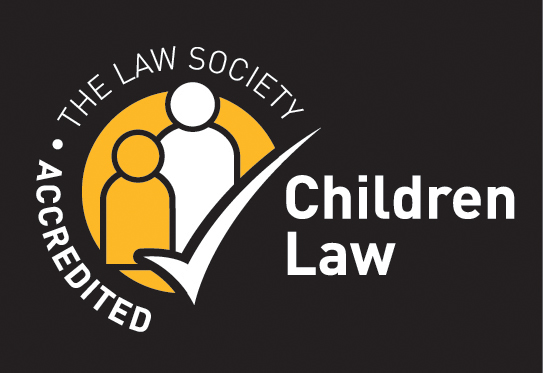Citation: [2016] EWCA Crim 1754
Advocate: Tony Bignall
Crown Court Annex: Bristol
Summary
Both these cases which are connected have been referred to the full court by the Registrar. Each involves an offence of child abduction. There is no guidance on sentencing from the Sentencing Guidelines Council or Sentencing Council. The offences can vary widely in terms of gravity and we consider it appropriate to give some guidance to sentencers.
Held: We think it right to adhere to the approach of s.143 of the Criminal Justice Act 2003 by considering the seriousness of an offence by reference to an offender’s culpability and the harm caused. Such guidance as we give will necessarily be general in nature and should be flexibly applied. As always each case will need to be considered in the light of its own particular circumstances. In addition, as this court observed in R v Kayani and Solliman [2012] 2 Cr App R (S) 38 at [53], cases of this sort should normally incorporate a significant element of deterrence.
We have considered Kayani, R v SB [2012] 2 Cr App R (S) 71 and a number of other decisions of this court which reflected the varying circumstances underlying prosecutions for these offences. We have also had the benefit of one member of this constitution having considerable experience in handling abduction cases under the jurisdiction of the Family Division of the High Court.
It seems to us that the most serious class of case, of which Kayani is an example, will involve a high level of harm exemplified by a very lengthy period of abduction or detention, a serious effect on the child (whether emotional or otherwise), or serious damage to, or severance of a loving relationship with a parent, siblings, or other relevant person.
High culpability may be exemplified by persistent non-disclosure or concealment of the place of abduction, significant and sophisticated planning, breach of a court order or disregard of court process, intention to sever the relationship between the child and another relevant person, or abduction for a criminal purpose (for example a sexual purpose, female genital mutilation, or forced marriage).
Where there is a combination of both a high level of harm and a high level of culpability we would expect the bracket for such offending after a trial, to be 5 to 7 years.
Factors at the lower end of the spectrum of harm will include situations where there has been a brief period of abduction or detention, minimal effect on the child, or minimal effect on the relationship between the child and other affected party. Lesser culpability will be reflected where the abduction or detention is impulsive or spontaneous, or where there has been prompt subsequent disclosure of the place of abduction enabling effective action to be taken by the authorities. It may be that some of the more minor cases will not be dealt with by the criminal justice system at all, but rather by the Family Court by way of contempt proceedings. Where criminal proceedings are brought, then this guidance should be applied. Cases at this level will be particularly fact sensitive and we consider that a range between a high level community order and a term of 18 months imprisonment is appropriate where low level harm and culpability factors are in play.
Not all cases will involve a combination of high harm and high culpability factors or low harm and low culpability factors. Where there is a combination of, for example, high culpability and low harm or vice versa, the case will fall into an intermediate sentencing range of 18 months to 5 years. This range is necessarily wide to reflect a multiplicity of circumstances which would bring cases within this range. That may be based on combinations of high and low harm and culpability factors. It may also be based on medium level harm factors (such as a significant period of abduction or detention as occurred in the case of RH below), and/or medium level culpability factors. In short, this intermediate category will cover any combination of factors which is not high/high or low/low in terms of harm and culpability.
Another medium level harm factor would be where there has been some emotional or other effect upon the child’s life as occurred in LA below. A further medium harm factor will arise where there is some harmful effect upon the relationship between the child and the adult from whose custody or control a child has been taken (see RH). A medium level of culpability will also arise where some degree of planning is involved (see LA). It will of course be for a sentencing judge to weigh and assess where in the spectrum of harm and culpability any individual case falls, and to identify into which of the ranges an assessment of those factors places the case.
In considering where to place a case within a range the court will also need to have regard to aggravating and mitigating factors in the usual way. Obviously features common to all offences such as previous good or bad character will play their part. Non-exhaustive offence-related aggravating factors include exposing the child to risk of harm; abduction of an already vulnerable child; group action; use of significant force; abduction to a non-Hague Convention country; abduction to a place with which the child has no prior links; and, in s.2 cases, removal from the jurisdiction. Non-exhaustive mitigating factors include enabling prompt contact to take place with the adult deprived of custody or control, compliance with court orders, and cooperation with authorities.
In addition, it is open to the court to take into account the effect of a sentence on a child where the offending person is the sole carer for the child abducted or other children. This is not a matter of mitigation personal to the offender; rather, it arises from the need for court to have regard to the interests of a child or children affected.
Careful consideration of the principles laid down by this court by in R v Petherick [2012] 1 Cr App R (S) 116 is required so that wider public interests and those of a child are dealt with proportionately.







